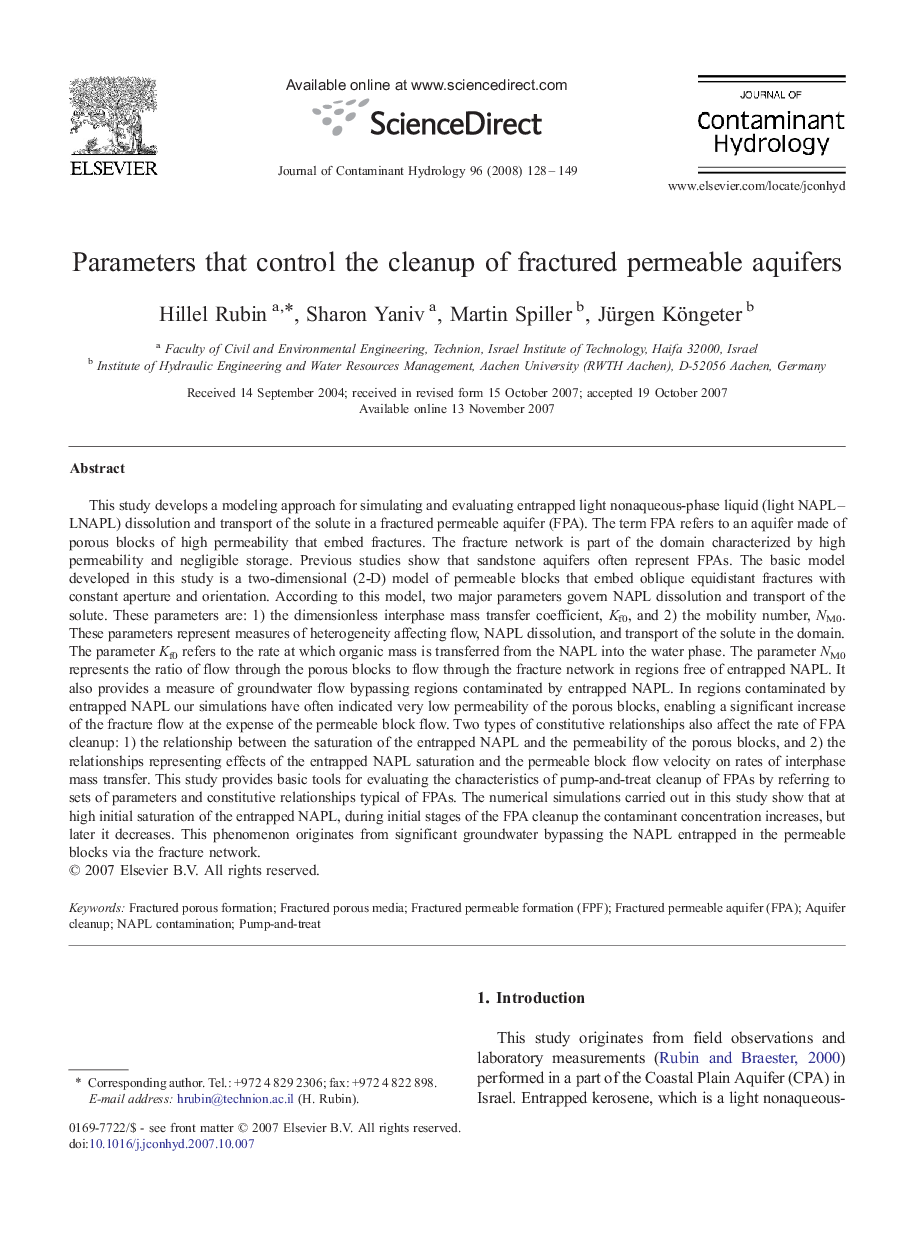| کد مقاله | کد نشریه | سال انتشار | مقاله انگلیسی | نسخه تمام متن |
|---|---|---|---|---|
| 4547542 | 1627116 | 2008 | 22 صفحه PDF | دانلود رایگان |
عنوان انگلیسی مقاله ISI
Parameters that control the cleanup of fractured permeable aquifers
دانلود مقاله + سفارش ترجمه
دانلود مقاله ISI انگلیسی
رایگان برای ایرانیان
کلمات کلیدی
موضوعات مرتبط
مهندسی و علوم پایه
علوم زمین و سیارات
فرآیندهای سطح زمین
پیش نمایش صفحه اول مقاله

چکیده انگلیسی
This study develops a modeling approach for simulating and evaluating entrapped light nonaqueous-phase liquid (light NAPL-LNAPL) dissolution and transport of the solute in a fractured permeable aquifer (FPA). The term FPA refers to an aquifer made of porous blocks of high permeability that embed fractures. The fracture network is part of the domain characterized by high permeability and negligible storage. Previous studies show that sandstone aquifers often represent FPAs. The basic model developed in this study is a two-dimensional (2-D) model of permeable blocks that embed oblique equidistant fractures with constant aperture and orientation. According to this model, two major parameters govern NAPL dissolution and transport of the solute. These parameters are: 1) the dimensionless interphase mass transfer coefficient, Kf0, and 2) the mobility number, NM0. These parameters represent measures of heterogeneity affecting flow, NAPL dissolution, and transport of the solute in the domain. The parameter Kf0 refers to the rate at which organic mass is transferred from the NAPL into the water phase. The parameter NM0 represents the ratio of flow through the porous blocks to flow through the fracture network in regions free of entrapped NAPL. It also provides a measure of groundwater flow bypassing regions contaminated by entrapped NAPL. In regions contaminated by entrapped NAPL our simulations have often indicated very low permeability of the porous blocks, enabling a significant increase of the fracture flow at the expense of the permeable block flow. Two types of constitutive relationships also affect the rate of FPA cleanup: 1) the relationship between the saturation of the entrapped NAPL and the permeability of the porous blocks, and 2) the relationships representing effects of the entrapped NAPL saturation and the permeable block flow velocity on rates of interphase mass transfer. This study provides basic tools for evaluating the characteristics of pump-and-treat cleanup of FPAs by referring to sets of parameters and constitutive relationships typical of FPAs. The numerical simulations carried out in this study show that at high initial saturation of the entrapped NAPL, during initial stages of the FPA cleanup the contaminant concentration increases, but later it decreases. This phenomenon originates from significant groundwater bypassing the NAPL entrapped in the permeable blocks via the fracture network.
ناشر
Database: Elsevier - ScienceDirect (ساینس دایرکت)
Journal: Journal of Contaminant Hydrology - Volume 96, Issues 1â4, 19 February 2008, Pages 128-149
Journal: Journal of Contaminant Hydrology - Volume 96, Issues 1â4, 19 February 2008, Pages 128-149
نویسندگان
Hillel Rubin, Sharon Yaniv, Martin Spiller, Jürgen Köngeter,